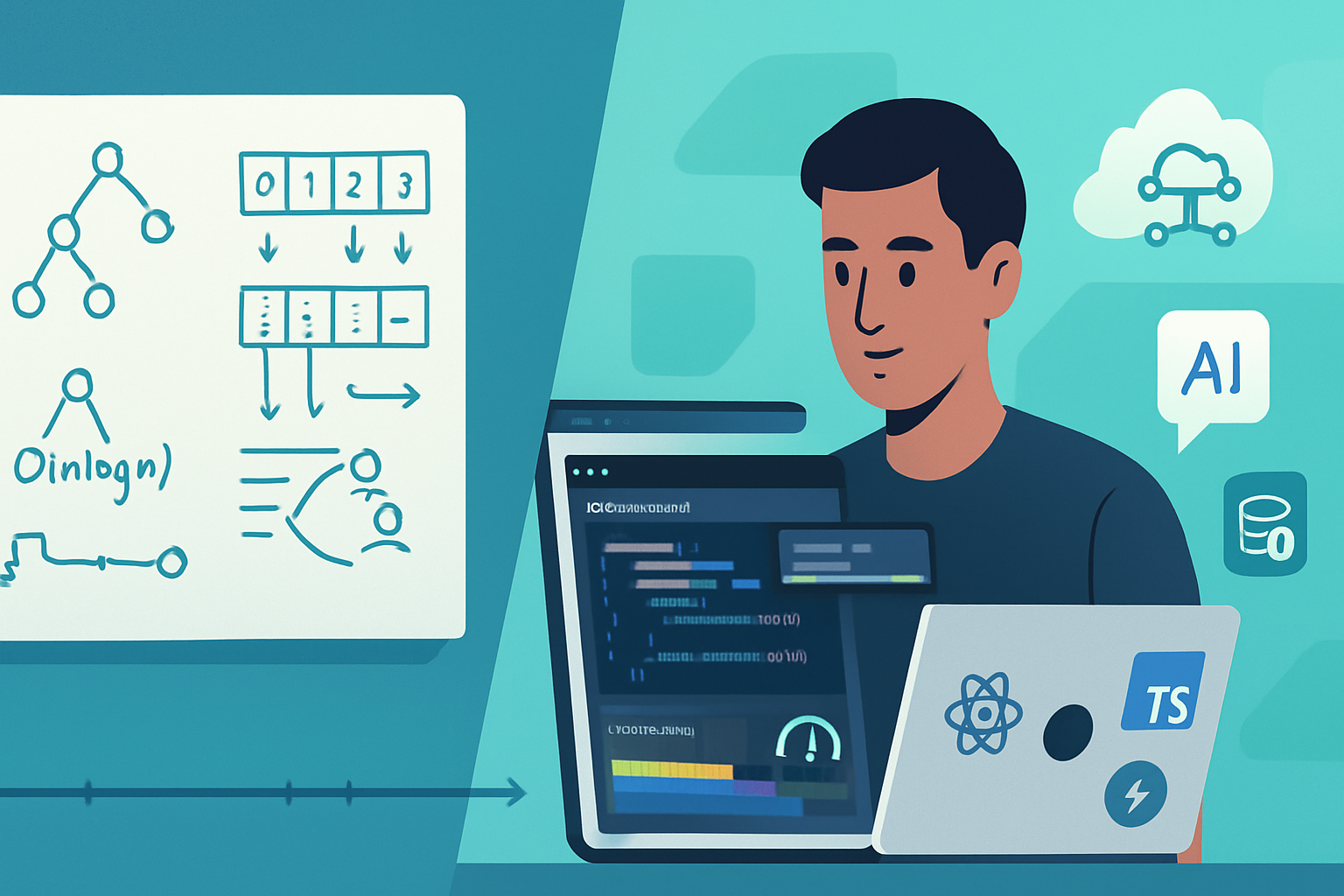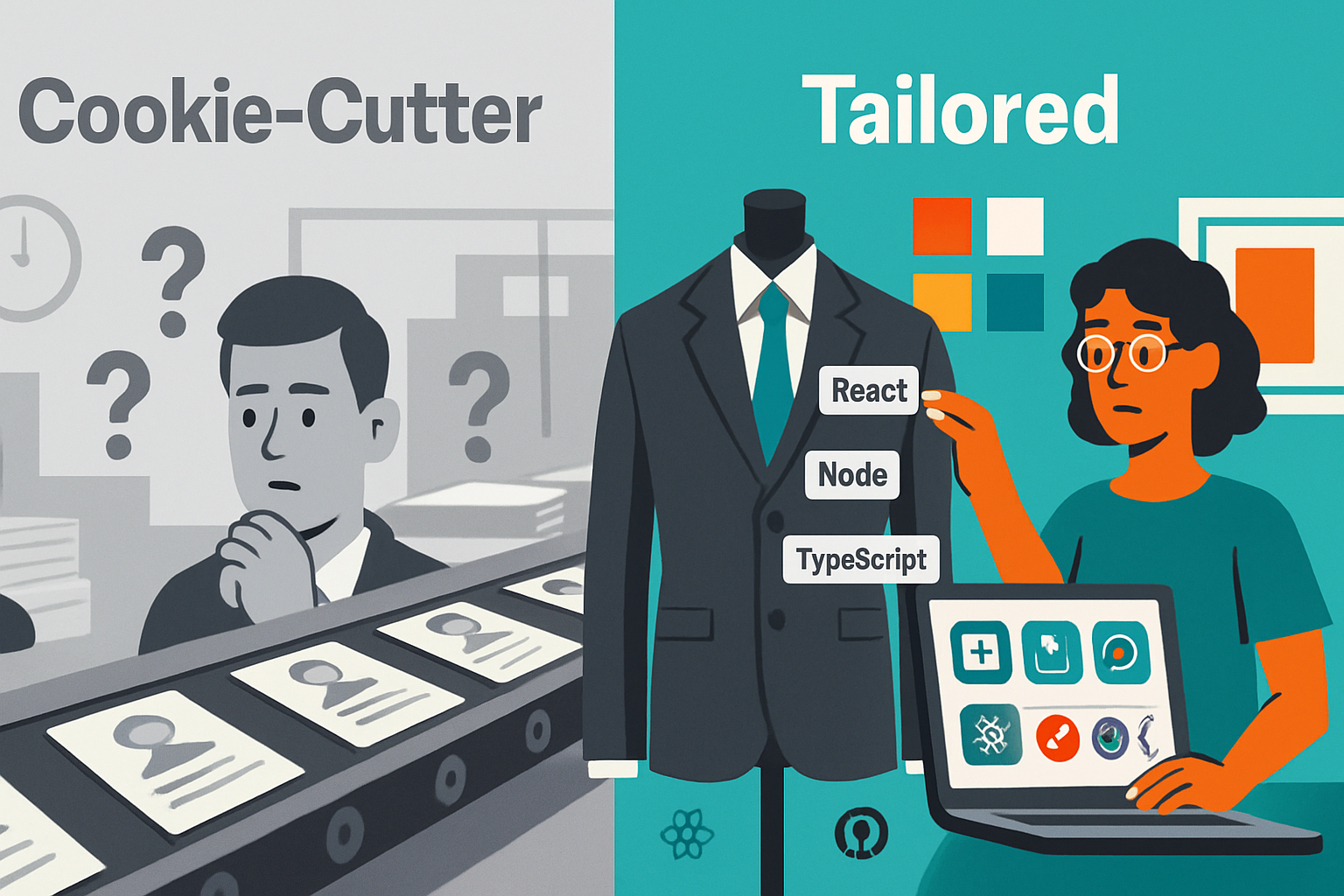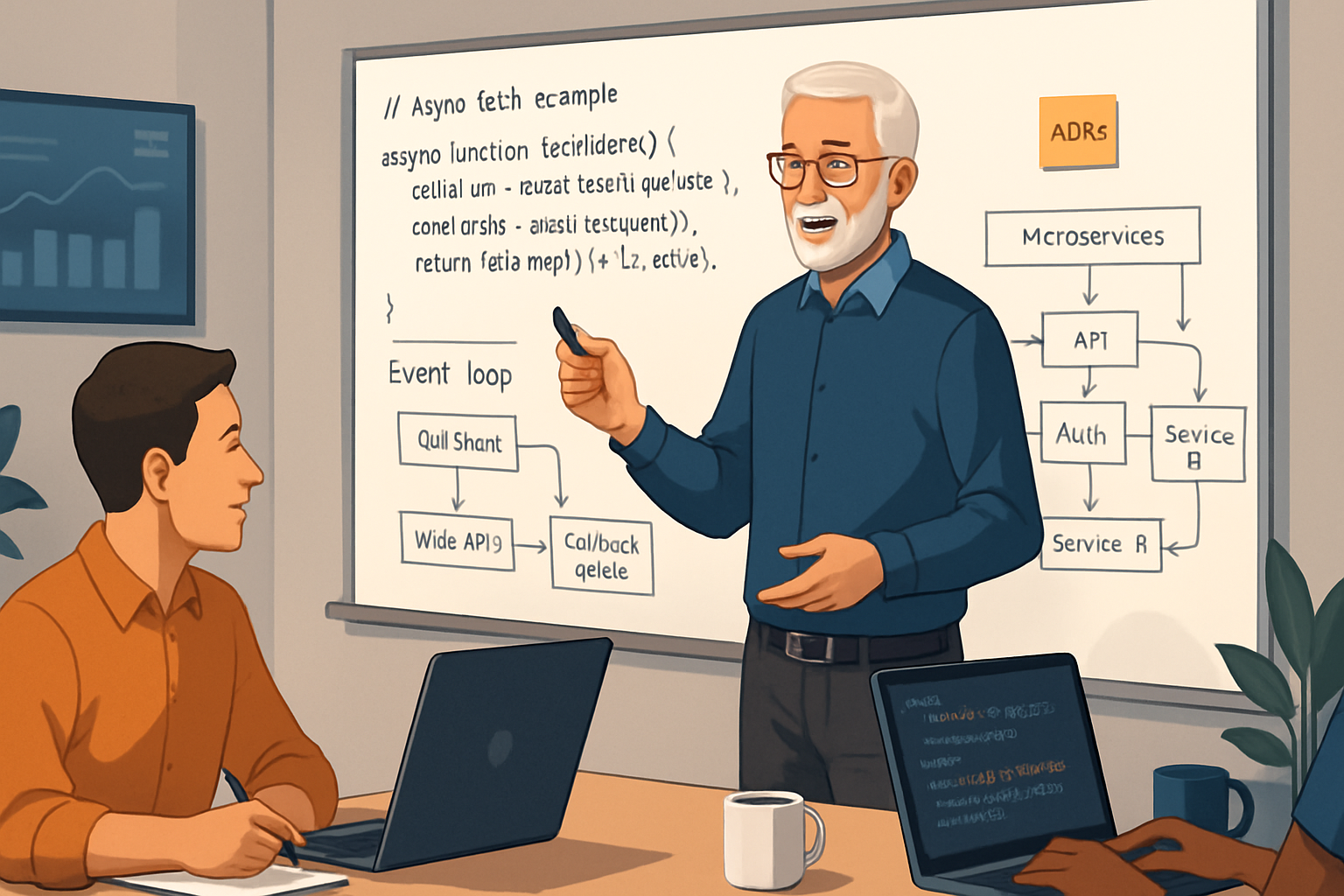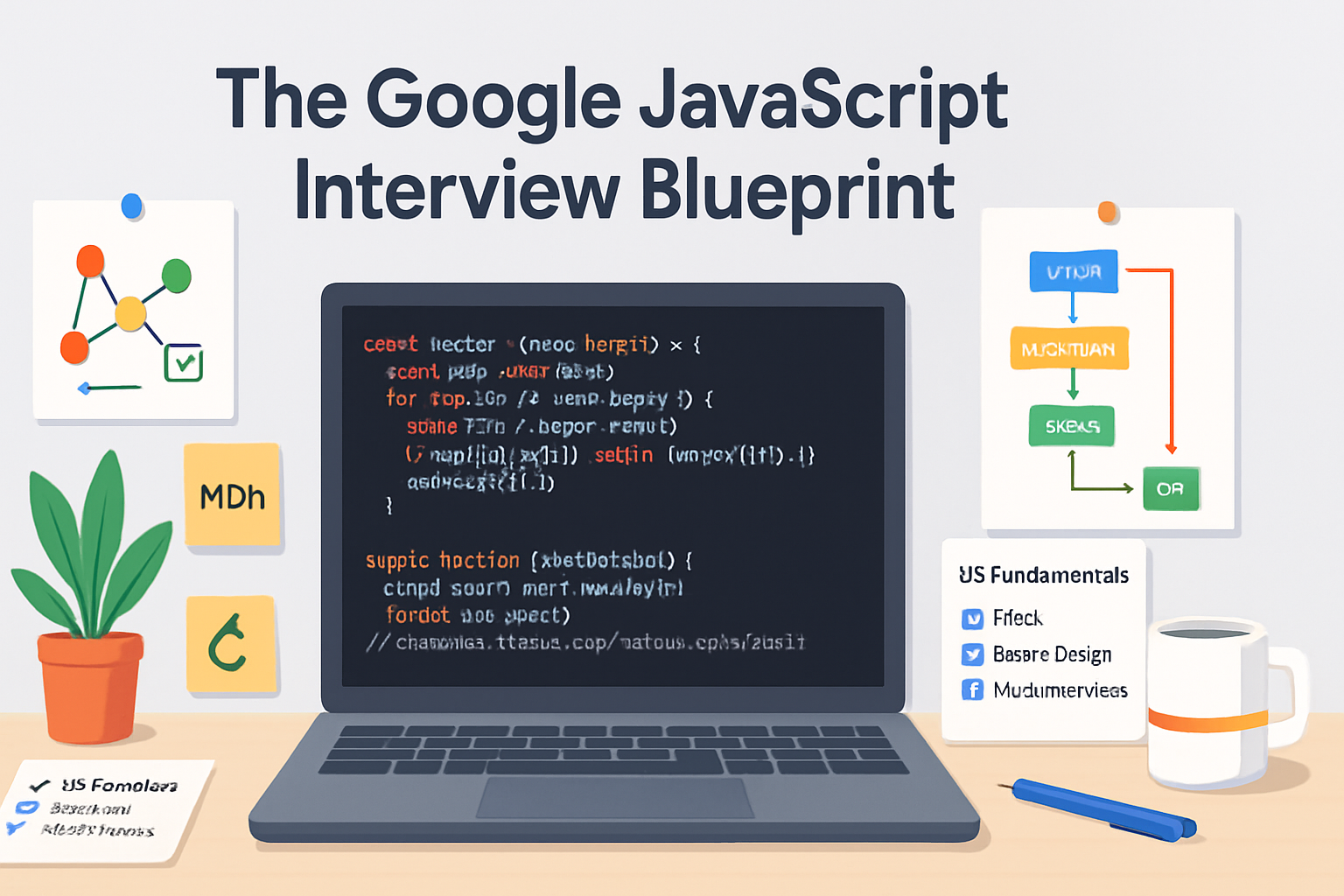· career · 6 min read
The Evolution of JavaScript Interview Questions: What to Expect in 2025
Discover how JavaScript interview questions have shifted from whiteboard algorithms to practical, production-focused challenges-and how to prepare for the kinds of questions you'll face in 2025, including performance debugging, real-world architecture, and AI-aware tooling.

Introduction
By the time you finish this article you’ll know exactly what kinds of JavaScript interview questions are likely to appear in 2025 - and how to prepare so you can answer them confidently. Expect fewer contrived puzzles and more real-world scenarios: debugging a memory leak in a SPA, designing an offline-capable collaborative feature, or optimizing server-side rendering for Time-to-Interactive. Read on for concrete examples, a preparation plan, and a sample scoring rubric.
Quick history: how we got here
- 2005–2015: The rise of algorithmic interviews. JavaScript was increasingly used in backend and frontend; recruiters leaned on traditional data-structures-and-algorithms (DSA) questions to test general problem-solving.
- 2015–2020: Framework boom. React, Vue, and Angular shifted focus to component architecture, state management, and lifecycle questions. Frontend performance and build tooling began to matter.
- 2020–2024: Practicality increases. Take-home projects, live coding in real editors, and questions about TypeScript, bundlers, SSR/SSG, and observability became common.
The through-line: interviews moved from abstract puzzles toward problems that measure the candidate’s ability to deliver and maintain production code.
Why 2025 will emphasize practical, product-focused questions
Three forces drive the change:
- Production complexity. Modern web apps run on many runtimes (browsers, Node, edge). Hiring teams want engineers who understand networks, performance budgets, and deployment constraints.
- Tooling and ecosystem maturity. TypeScript is mainstream, bundlers and runtimes evolved, and teams expect candidates to make trade-offs with knowledge of tools (ESM, tree-shaking, source maps).
- AI and remote workflow changes. AI assistants (e.g., GitHub Copilot) change how engineers write code; interviews are shifting to evaluate reasoning, system design, and correctness rather than rote typing.
What hiring teams will evaluate in 2025
Hiring teams will look for a combination of technical depth, practical judgement, and communication:
- Core JavaScript fundamentals: the event loop, microtasks vs macrotasks, closures, prototypes, and spec-accurate behaviors. Reference: MDN - Event loop.
- Runtime and environment knowledge: Node.js internals and performance patterns (Node.js Docs), V8 optimization basics (V8 Blog).
- Type safety and maintainability: pragmatic TypeScript design and migration strategies.
- Frontend performance: TTI, hydration, code-splitting, and lazy-loading (web.dev).
- Debugging and observability: profiling with DevTools, diagnosing memory leaks, interpreting flame charts, logs, and traces (Lighthouse and DevTools resources: Lighthouse).
- Systems thinking: trade-offs in architecture for SSR vs CSR, edge computing (Cloudflare Workers, Deno), and serverless patterns (Cloudflare Workers, Deno).
- Security and privacy: secure serialization, XSS/CSRF mitigations, and privacy-preserving features (see OWASP).
- Collaboration and delivery: PR hygiene, testing strategy, CI, deployment pipelines, and monitoring.
Typical question types you’ll likely see in 2025
Below are categories plus concrete examples interviewers will favor.
Debugging and diagnosis (live or take-home)
- Example: “Your single-page app slows down after a user navigates between views repeatedly. Using Chrome DevTools, how would you find the leak? What fixes might you try?”
- Skills tested: profiling, event listener leaks, retained DOM nodes, closure/capture issues.
Performance optimization (measurable outcomes)
- Example: “Given a React app with a 4.5s TTI on throttled mobile, propose three concrete changes that yield measurable improvement and explain the trade-offs.”
- Skills tested: bundle analysis, lazy-loading, SSR/hydration strategies, image optimization.
Small system design (frontend or full-stack)
- Example: “Design an offline-first shared note app that syncs changes when the user regains connectivity. Sketch data model, conflict resolution, and decide where computation should happen.”
- Skills tested: architecture, CRDTs or last-writer-wins rationale, storage options (IndexedDB), service worker strategies.
Tooling and build pipeline questions
- Example: “Explain how tree-shaking works and why a library might not be treeshakeable. How would you fix it?”
- Skills tested: ESM, side-effect-free modules, bundler configs.
Interoperability and runtime differences
- Example: “You’re migrating a library from Node.js CommonJS to ESM and TypeScript. What pitfalls will you watch for and how will you validate behavior across runtimes?”
- Skills tested: module resolution, conditional exports, typing strategies.
Algorithmic questions grounded in product scenarios
- Example: “Implement a rate limiter for an API gateway used by the frontend with different prioritization for premium users.”
- Skills tested: algorithmic thinking, time and space trade-offs, correctness under concurrency.
AI-aware questions
- Example: “How would you use an AI assistant to speed up a refactor while ensuring correctness? What tests and reviews would you require?”
- Skills tested: tool usage, critical thinking, tests and guardrails.
Sample 2025 interview prompt (realistic take-home)
Prompt: “You have a React/TypeScript SPA that uses IndexedDB for offline caching and syncs with a Node.js API. Users report duplicated items after reconnect. Implement a reproducible test case, identify root cause(s), and propose a patch. Explain how you’ll roll it out with minimal user disruption.”
What that tests: end-to-end debugging, IndexedDB semantics, sync conflict resolution, test-driven fixes, rollout strategy.
A concrete preparation plan (8 weeks)
Week 1–2: Foundations and primitives
- Revisit core JS behaviors: event loop, async/await, promises, scoping, prototypes. Use MDN and short exercises.
Week 3–4: Runtimes and tooling
- Hands-on: run Node.js and Deno examples, read a bit of V8 blog posts, and learn how ESM differs from CommonJS.
- Practice bundler config (Vite, Webpack, Rollup) and source-map debugging.
Week 5: Performance and profiling
- Practice diagnosing performance with Chrome DevTools and Lighthouse. Simulate throttled CPU and network.
- Exercise: reduce TTI on a demo app by 50% and document steps.
Week 6: Real-world projects and debugging
- Build or contribute to a small app with offline support (IndexedDB + service worker) and include tests.
- Introduce deliberate leaks and practice finding them.
Week 7: System design and collaboration
- Sketch system designs for common interview prompts: live collaboration, offline sync, SSR.
- Pair program with a friend or use mock interviews.
Week 8: Mock interviews and AI tooling
- Do timed live exercises in the editor. Use an AI assistant but practice explaining why you accept or reject its suggestions.
- Prepare concise narratives for 3–5 projects (what you built, trade-offs, hard bugs).
Sample practice questions and what to show in answers
Debugging: “Find and fix a memory leak in this sandboxed repo.”
- Show: how you reproduce, profiling screenshots, root cause, minimal patch, tests.
Performance: “Cut bundle size and improve startup latency.”
- Show: before/after metrics, bundle analysis, concrete code changes, test benchmarks.
Design: “Design an offline sync protocol for collaborative lists.”
- Show: data model, conflict policy, storage backend choices, failure modes.
Code: “Implement debounce and throttle with TypeScript types.”
- Show: correct edge-case handling, strong typings, tests.
Scoring rubric (quick)
- Correctness: 40% - Does it work across edge cases?
- Explanation & trade-offs: 25% - Can the candidate justify decisions?
- Tooling & observability: 15% - Do they use the right profiling and tests?
- Communication & collaboration: 10% - Can they teach/explain clearly?
- Delivery & hygiene: 10% - Tests, types, and commit/messages.
How to demonstrate your value beyond code
- Ship stories: present 2–3 examples where you moved metrics (load time, error rate, developer velocity).
- Show ownership: PRs, deployment stories, rollback decisions.
- Emphasize monitoring: which metrics you tracked and why.
Predictable interview pitfalls in 2025
- Over-reliance on AI: blindly accepting generated code without reasoning.
- Treating interviews as algorithm contests only - missing practical trade-offs.
- Ignoring cross-environment behavior (browser vs edge vs node).
- Not having a reproducible debugging story.
Top resources to study (short list)
- MDN Web Docs (JavaScript fundamentals): https://developer.mozilla.org/en-US/docs/Web/JavaScript
- Chrome DevTools and performance guides: https://developer.chrome.com/docs/devtools/
- web.dev (performance and best practices): https://web.dev/
- V8 blog for optimization insights: https://v8.dev/blog
- Node.js documentation: https://nodejs.org/en/docs/
- Cloudflare Workers and edge patterns: https://developers.cloudflare.com/workers/
- OWASP (security basics): https://owasp.org
Final thoughts - what wins in 2025
Interviewers in 2025 will prize engineers who can move projects forward, reason about trade-offs, and recover from real production failures. You don’t need to memorize every algorithm. You need to show you can diagnose, measure, and fix problems under real constraints - and communicate why your changes matter.
Be practical. Be measurable. Be curious.



